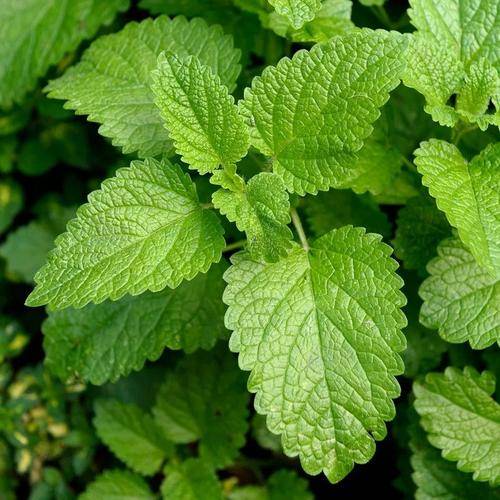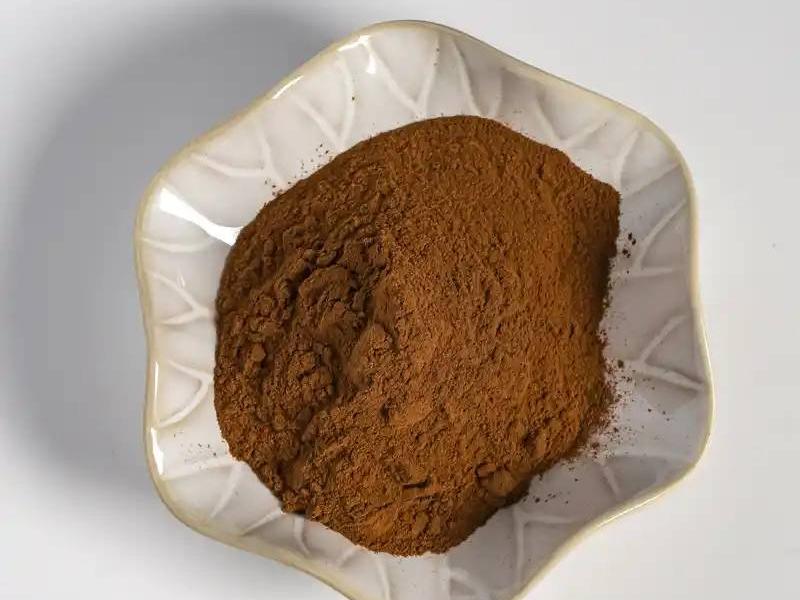Lemon Balm Extract: A Functional Food Ingredient Solution for Mood Support
Against 이backdrop 의increasingly prevalent global issues of insomnia 그리고emotional health, more consumers are seeking safe, natural solutions to improve sleep quality 그리고alleviate daily stress. Lemon balm (멜리 사officinalisL), a traditional natural plant used for calming emotions and promoting sleep, is gaining significant attention 에서the modern functional food sector. Its extract, rich in bioactive compounds and renowned for its soothing properties, has become an ideal ingredient for developing foods targeting emotional well-being and sleep support.
녹색 봄 Technology leverages advanced plant extraction techniques and stringent quality control systems to provide high-purity, stable lemon balm extract. We are committed to delivering standardized, scalable, and traceable natural ingredient solutions, empowering businesses to create safe, effective, and market-responsive functional foods.

1 Lemon Balm Extract: Synergistic Multi-Active Ingredients Empowering Health Food Innovation
As a natural botanical ingredient, lemon balm extract is rich in multiple high-value active components, including flavonoids, polyphenols, and terpenoids, demonstrating broad application potential in functional foods, dietary supplements, and health beverages.
1.1 Flavonoids: Antioxidant and Health Maintenance
Lemon balm extract contains multiple flavonoids such as quercetin, luteolin, and rutin. Research indicates these components possess strong free radical scavenging capabilities, helping alleviate oxidative stress and support overall health. Quercetin and luteolin also aid in maintaining cellular vitality and metabolic balance, making them suitable for developing antioxidant, sports recovery, and daily health maintenance food and beverage products.
1.2 Diversified Applications of Polyphenolic Compounds
Lemon balm extract is rich in polyphenolic components like rosmarinic acid, caffeic acid, and protocatechuic acid. Rosmarinic acid and caffeic acid exhibit excellent antioxidant properties, protecting both the product itself and human cells from oxidative damage; protocatechuic acid supports the nervous system. These components are suitable for antioxidant formulations, neurohealth products, and clean-label products using natural stabilizers as alternatives to synthetic antioxidants.
1.3 Terpenes: Combining Flavor and Function
Terpenes in lemon balm extract—such as citronellal, geraniol acetate, and caryophyllene—not only impart its distinctive fresh aroma but also exhibit bioactive properties that enhance both sensory appeal and functional value. These components are particularly suitable for developing functional essential oil foods, mood-supporting beverages, and natural flavoring products.
Lemon balm extract demonstrates significant synergistic effects among its multiple components. Its natural origin and versatile application forms make it suitable for various product types—including gummies, solid beverages, capsules, and essential oil-based foods—empowering brands to create differentiated, multifunctional health products.
2 Natural Lemon Balm Extract: An Ideal Ingredient for Mood and Sleep Support Functional Foods
Lemon balm extract is gaining increasing attention in the functional food industry due to its natural mood-relaxing and sleep-supporting properties. This ingredient contains multiple active components, offering comprehensive application value.
For emotional health, rosmarinic acid in lemon balm extract helps maintain neurotransmitter balance, supporting emotional stability and mental clarity. Synergistic effects with natural compounds like caffeic acid and citral further enhance soothing effects. Research indicates this extract promotes exploratory behavior and positive responses, providing reliable evidence for related functional food development.
The extract also demonstrates exceptional antioxidant properties. Polyphenols like rosmarinic acid and caffeic acid effectively neutralize free radicals, reduce oxidative stress, and protect cellular health. In vitro experiments show that cell models treated with lemon balm extract exhibit significantly enhanced vitality and antioxidant capacity, offering dual advantages for extending functional food shelf life and boosting health protection.
Furthermore, the lemon balm extract possesses inherent natural antimicrobial properties. Key active components like citral and citronellal inhibit various microorganisms, opening new possibilities for developing clean-label functional foods.
This ingredient is suitable for sleep-aid beverages, mood-regulating gummies, relaxation teas, and diverse health snacks, helping your products establish differentiated advantages in the market.

3 Green Spring Technology's Lemon Balm Extract Delivers Reliable Solutions for Health Products
Green Spring Technology specializes in plant-based active ingredient extraction. Leveraging advanced low-temperature extraction techniques and standardized production systems, we provide customers with high-purity, high-bioavailability lemon balm extract. We fully recognize the challenges businesses face when developing mood health and sleep support products—including inconsistent ingredient stability, fluctuating active component levels, inconsistent efficacy, and compliance risks.
To address these concerns, Green Spring Technology has established a comprehensive, end-to-end quality control system. This ensures quantitative standardization of key active components such as polyphenols, flavonoids, and terpenoids, guaranteeing each batch possesses a reliable composition profile and consistent efficacy. This significantly reduces technical uncertainties for companies during product formulation and large-scale production.
Our lemon balm extract powder ingredient is suitable for developing various dosage forms, including softgels, solid beverages, pressed candies, and functional gummies. It empowers companies to create scientifically backed, consumer-attractive health products for sleep management, emotional relaxation, and antioxidant support. Beyond supplying ingredients, Green Spring Technology aspires to be your technical partner in product innovation, offering one-stop solutions from ingredient analysis and formulation recommendations to regulatory consulting.
To request complimentary samples, obtain comprehensive technical documentation, or discuss customized collaborations, please contact us at helen@greenspringbio.com or WhatsApp: +86 13649243917. Our technical team stands ready to support you in advancing innovation and breakthroughs in natural health products.
참조
[1] 류루이, 멍팡, 바이후이.LDL의 산화적 변형에 대한 quercetin, rutin 및 puerarin의 저해효과에 대한 연구 (J.대한한의학회지 2007, 32 (19):2085-2062.
자오라이팅, 궈창장, 카이동리안 외.quercetin 보충이 쥐 말초혈액의 항산화계에 미치는 영향.무장경찰의대논문집 2009, 18 (4):269-279.
[3] 손주안, 유시춘.quercetin [J]의 연구 진행.현대중국의학연구와 실천, 2011, 25(3):85-87.
[4]Wang J S, He Y, Hua Z C 등이 있다.luteolin [J]의 약리학적 효과에 대한 연구 진행.생명과학, 2013, 25(6):561-564.
[5]Zhou D, Liu A, Du G. rosmarinic acid [J]의 약리학적 연구 진행.중국신약학회지, 2011, 20(7):594-597.
[6] 팬 J, 케이 X, 풍 X 등.caffeic acid의 in vitro 항산화 활성에 관한 연구.한국식품과학회지 2015, 15(3):66-71.
장서리, 리야첸, 니우신화 외 7명.protocatechuic acid 가 Parkinson&의 뇌조직의 항산화능에 미치는 영향#39;s 병 모델 생쥐 [J].현대 생물의학의 발전, 2011, 17(12):3249-3251.
[8] Sofowor 한 A, Ogunbodede E, Onayade a. 역할 and 장소 of 약용 식물 in the 전략 질병 예방을 위해 [J.Afr J Tradit Complement Alter n Med.,2013,(10):210-229.
[9]Gurck L,DubravskaR,Mikl ovicova.의 경작의 경제학 샐 officinalis and Melissa officinalis다 [J다]Agric다.경제학.체코다., 2005,51:348-356.
-
Prev
Stress Relief+Natural Antibacterial Properties: Lemon Balm Essential Oil Empowers Health Product Innovation
-
다음
Empower Your Mood Health Supplements With Natural Lemon Balm Extract


 영어
영어 프랑스
프랑스 스페인
스페인 러시아
러시아 한국
한국 일본
일본




